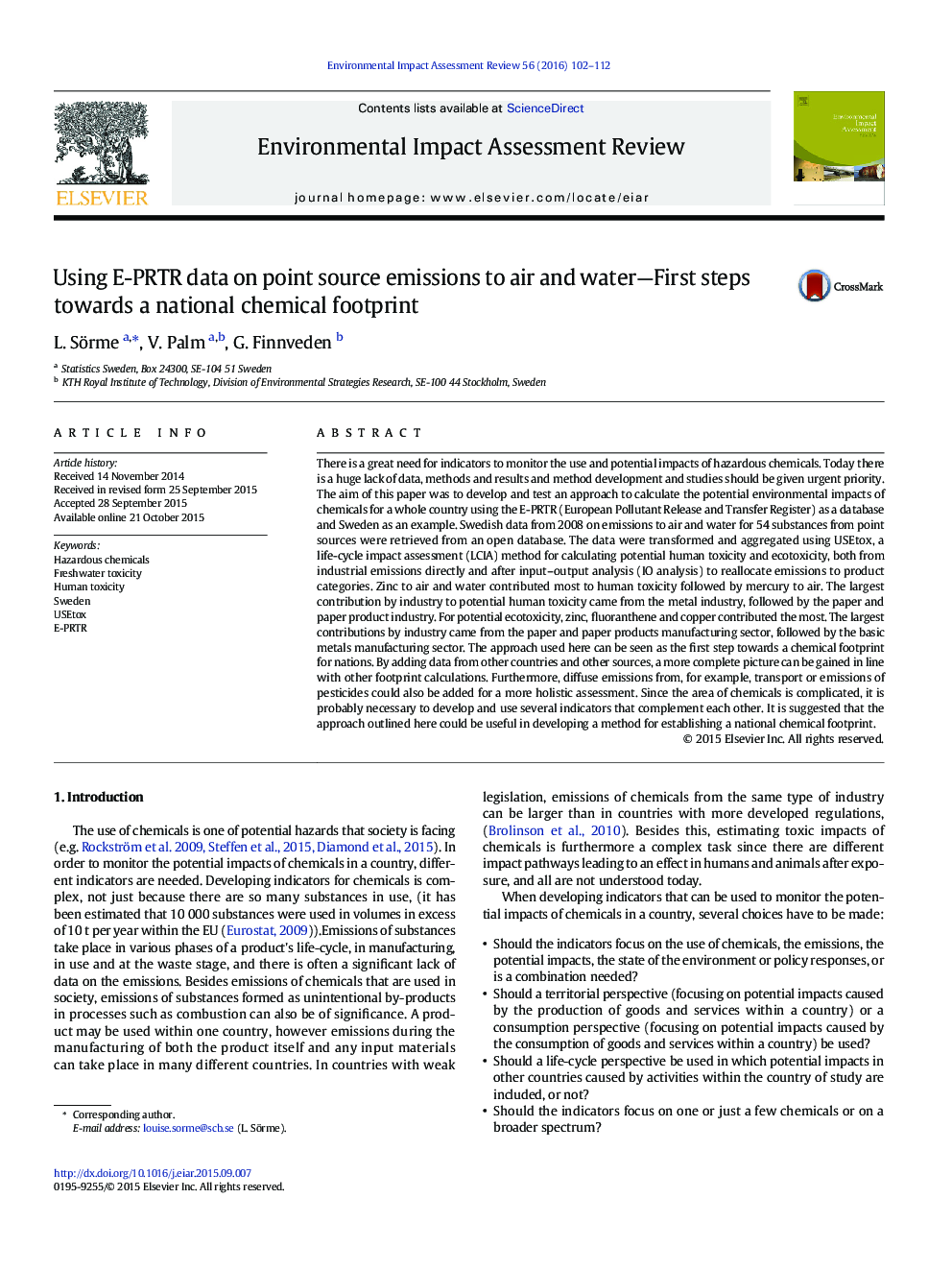| کد مقاله | کد نشریه | سال انتشار | مقاله انگلیسی | نسخه تمام متن |
|---|---|---|---|---|
| 1052678 | 1484989 | 2016 | 11 صفحه PDF | دانلود رایگان |

• European Pollutant and Transfer Register (E-PRTR) used to develop indicators
• Study combined emissions to air and water from E-PRTR with USEtox and IO analysis
• Metals and especially zinc contributed most to potential human toxicity and ecotoxicity
• Paper and metal industries contribute most to potential human toxicity and ecotoxicity
• This new assessment could be used by many countries and can be developed further.
There is a great need for indicators to monitor the use and potential impacts of hazardous chemicals. Today there is a huge lack of data, methods and results and method development and studies should be given urgent priority. The aim of this paper was to develop and test an approach to calculate the potential environmental impacts of chemicals for a whole country using the E-PRTR (European Pollutant Release and Transfer Register) as a database and Sweden as an example. Swedish data from 2008 on emissions to air and water for 54 substances from point sources were retrieved from an open database. The data were transformed and aggregated using USEtox, a life-cycle impact assessment (LCIA) method for calculating potential human toxicity and ecotoxicity, both from industrial emissions directly and after input–output analysis (IO analysis) to reallocate emissions to product categories. Zinc to air and water contributed most to human toxicity followed by mercury to air. The largest contribution by industry to potential human toxicity came from the metal industry, followed by the paper and paper product industry. For potential ecotoxicity, zinc, fluoranthene and copper contributed the most. The largest contributions by industry came from the paper and paper products manufacturing sector, followed by the basic metals manufacturing sector. The approach used here can be seen as the first step towards a chemical footprint for nations. By adding data from other countries and other sources, a more complete picture can be gained in line with other footprint calculations. Furthermore, diffuse emissions from, for example, transport or emissions of pesticides could also be added for a more holistic assessment. Since the area of chemicals is complicated, it is probably necessary to develop and use several indicators that complement each other. It is suggested that the approach outlined here could be useful in developing a method for establishing a national chemical footprint.
Journal: Environmental Impact Assessment Review - Volume 56, January 2016, Pages 102–112